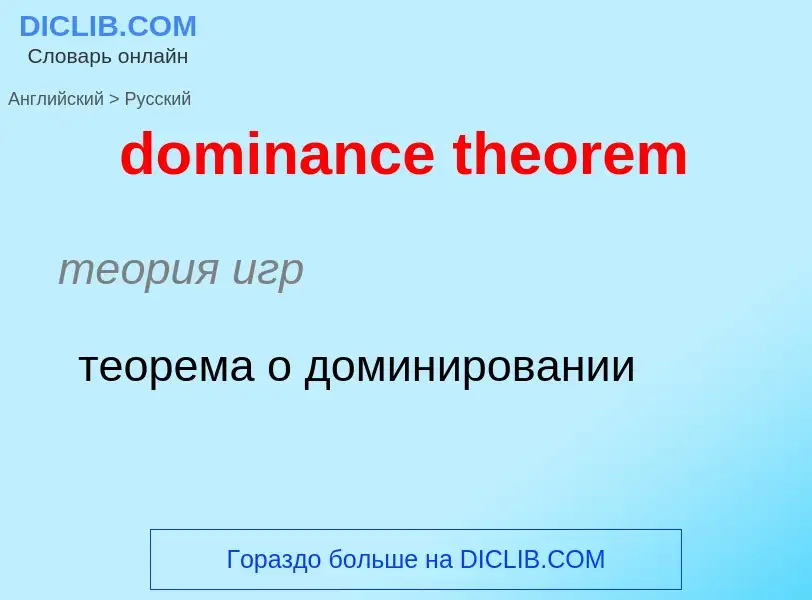Translation and analysis of words by ChatGPT artificial intelligence
On this page you can get a detailed analysis of a word or phrase, produced by the best artificial intelligence technology to date:
- how the word is used
- frequency of use
- it is used more often in oral or written speech
- word translation options
- usage examples (several phrases with translation)
- etymology
dominance theorem - translation to russian
теория игр
теорема о доминировании
математика
теорема о дивергенции
теорема Гаусса-Остроградского
Definition
Wikipedia
Stochastic dominance is a partial order between random variables. It is a form of stochastic ordering. The concept arises in decision theory and decision analysis in situations where one gamble (a probability distribution over possible outcomes, also known as prospects) can be ranked as superior to another gamble for a broad class of decision-makers. It is based on shared preferences regarding sets of possible outcomes and their associated probabilities. Only limited knowledge of preferences is required for determining dominance. Risk aversion is a factor only in second order stochastic dominance.
Stochastic dominance does not give a total order, but rather only a partial order: for some pairs of gambles, neither one stochastically dominates the other, since different members of the broad class of decision-makers will differ regarding which gamble is preferable without them generally being considered to be equally attractive.
Throughout the article, stand for probability distributions on , while stand for particular random variables on . The notation means that has distribution .
There are a sequence of stochastic dominance orderings, from first , to second , to higher orders . The sequence is increasingly more inclusive. That is, if , then for all . Further, there exists such that but not .
Stochastic dominance could trace back to (Blackwell, 1953), but it was not developed until 1969–1970.





